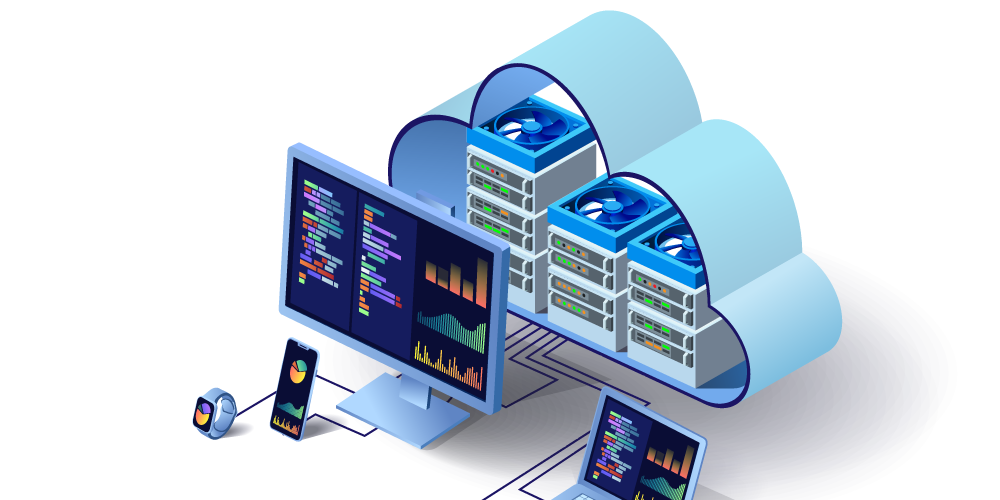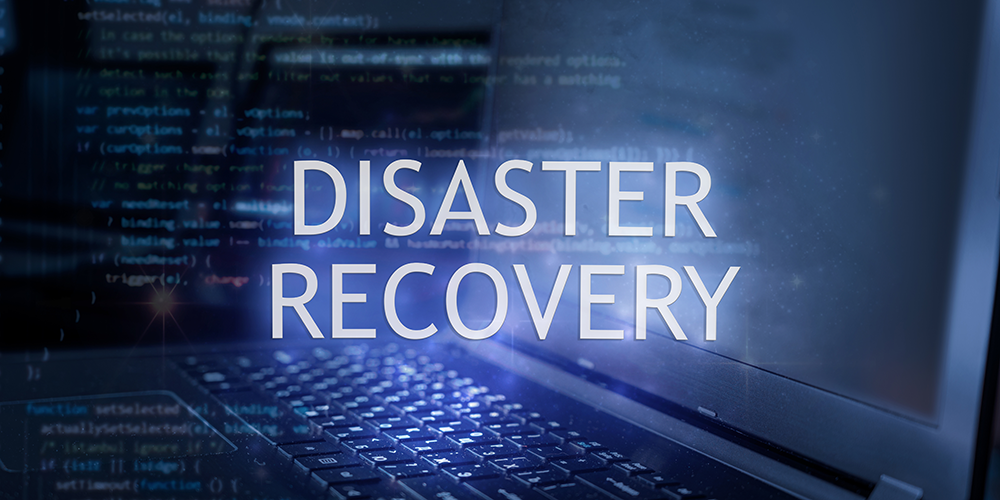
Feb 14, 2022 | SMB Technology, SMB Technology, SMB Technology, SMB Technology, Technology News
Cloud computing, with its many benefits and options, is here to stay. Its popularity continues to grow each year. Read on to learn how cloud offerings will benefit your company, and how to know which offerings to choose. Trends in Cloud Computing Cloud computing, and the spending on it, continues to grow. An article from CompTIA predicted that spending on Software as a Service (SaaS) will reach more than $145 billion in 2022. Interestingly, many businesses show an appetite for public cloud computing. Benefits of cloud computing in general, are the ability to access computing resources over the Internet; infrastructure management by the cloud service provider (CSP) removing the necessity for on-premise infrastructure; the ability to scale resources for varying demand; and the ability to manage costs using a subscription model. Public cloud computing offers these benefits, along with numerous data centers. If one center goes offline, another will pick up the traffic. The rise in demand for public cloud services also offers opportunities for managed service providers to transition to provide more of those services; with this opportunity for growth will come the need for retraining of staff to provide such services. Considerations in Choosing a Cloud Deployment With its benefits, deployment options, and delivery models, cloud computing requires considerations before adoption. When choosing a deployment option, consider your company’s needs before choosing. Public cloud is shared by multiple tenants, and careful attention needs to be paid to security. Since public cloud is expected to be popular, according to CompTIA, security will need to be a key consideration. Additionally, trends predict a change in...

Feb 7, 2022 | SMB Technology, SMB Technology, SMB Technology, SMB Technology, Technology News
What would your company do when faced with a disaster? For example, what would happen if a fire damaged your physical headquarters? And what if a cyberattack compromised your network with its data and applications? Even a short power outage can impact your company’s business operations. Read on to learn more about how a disaster recovery plan can help you protect your company’s technology assets and recover from a disaster. The Importance of a Disaster Recovery Plan Having a detailed disaster recovery plan (DR) for how to proceed during a disaster can make the difference in how well your company recovers, helping you avoid costly downtime and even fines for failure to comply with industry regulations. With this detailed, written plan in effect, your company can stay running, or get back to running, as soon as possible–protecting you from the loss of revenue and reputation resulting from an extended outage or data breach. Key Metrics for a Disaster Recovery Plan According to an article from CompTIA, two key metrics will help you draw up a plan to recover from a disaster, either natural or man-made. The Recovery Point Objective (RPO) defines how much data or service time can be lost before consequences become unacceptable. This objective should be considered ahead of time. For example, what outage duration is acceptable before legal and financial consequences become a reality? How much data can you afford to risk losing? The RPO will determine how often you backup your data, for instance. As far as data goes, what is mission-critical and what can you back up less frequently? With...

Jan 17, 2022 | SMB Technology, SMB Technology, SMB Technology, SMB Technology, Technology News
It’s said often that the matter of experiencing a cyberattack is “when,” not “if.” How can your company begin to prepare itself for something that can adversely affect it? According to CompTIA’s article, an Incident Response Plan (IRP), can help you think ahead and have a plan in place when an incident occurs. Read on to learn more about preparing and protecting your company from current and future threats. Incident Response Plans Defined An Incident Response Plan is what it sounds like, having a plan to respond to a cyber attack incident and mitigate the damage. An effective plan is a “combination of people, process and technology that is documented, tested and trained toward in the event of a security breach.” The purpose of it is to mitigate damage (data and money loss) and restore operations. The National Institute of Standards in Technology (NIST) sets forth a few models for your plan, whether it will be handled by a central Cyber Security Incident Response Team (CSIRT), distributed among multiple response teams for locations or departments, or one in which a central body relays response plans to affected teams. While plans contain four phases, the first one of preparation can help prevent a lot of damage. Steps in the Incident Response Plan Does everyone in your company know what to do first when a cyber attack hits? Do they know whether to power off their computers, and how soon they can resume work? What will managers do? Does your marketing team know who to communicate with, and when? These are just a few of the questions...

Jan 6, 2022 | SMB Technology, SMB Technology, SMB Technology, SMB Technology, Technology News
It is commonly said that employees are the “weak link” in your company’s cybersecurity plan. What if this was different, and they are actually a strong defense against cyberattacks? Read on to learn how to help your workers recognize and prevent a cyberattack, and to become security advocates for your company. Training Starts but Doesn’t End at Onboarding Training is common when onboarding new employees, but it should also be consistent and frequent. Employees should know how to recognize a phishing email, a common way that malware can enter your computer network. Bad actors send emails that appear to be legitimate, in order to obtain confidential information. Keys to a phishing email are an urgent and emotional call-to-action, unknown senders, and grammar and spelling errors. Not only do your workers need to recognize suspicious activity, but how to report and even escalate the matter. Workers also need to remember best practices for password management. All cybersecurity training needs to be frequent and consistent in order to reinforce the lessons and practices learned and make them automatic. Thus your employees can become “minimal risk,” possessing a sense of safe and unsafe behaviors and knowing what to do when something happens. With employees working remote, online cybersecurity options provide an economical and efficient way to train on this topic. Many online training platforms offer phishing simulation to ensure learning objectives are achieved. Best Practices in Password Management Let’s talk about passwords. Do your employees know what makes a good password? According to Google, a strong password can help safeguard your account, personal information and content like email...

Dec 9, 2021 | SMB Technology, SMB Technology, SMB Technology, SMB Technology, Technology News
A number of trends are expected to continue, as well as new ones to develop, in the coming year. These trends will introduce opportunities along with challenges in the IT industry. Read on to learn about how these movements in the industry affect its four pillars of operations, infrastructure, cybersecurity, and data. Focus on Strategy and Transformation Let’s face it, the last year and a half has been challenging. The work-at-the-office paradigm that many were used to has likely changed permanently. Remote workers, as well as creating more “nodes on the network,” have changed expectations; will some ever want to come back to the office, or stay remote? Managed services may be counting on remote work to stay popular, and to provide companies with network assistance, shown by a CAGR prediction of 7.9% ($355 billion) by 2026, according to IDC.In 2022, companies are expecting to move out of the tactical approach of just staying in business, and to start dusting off digital transformation projects that they couldn’t think of before, considering innovation and collaboration. The technology industry is expected to increase to $5.3 trillion in 2022, with a year-over-year growth increase of 5-6%, according to IDC. CompTIA’s trends outlook article points to a growing optimism about opportunities in the tech industry, coupled with challenges to manage. Opportunities in Information Technology The United States has long been a key player in the technology industry, accounting for 33% ($1.8 trillion) in expected spending for 2022. With its robust infrastructure and many connected users, as well as its abundant bandwidth, it has the opportunity to consider software development...

Dec 1, 2021 | SMB Technology, SMB Technology, SMB Technology, SMB Technology, Technology News
Many pieces comprise the customer experience puzzle, and one key trend is omnichannel, wherein multiple channels are integrated in such a way that a customer can switch seamlessly from one to another including call center, chat, web and mobile. Customer experience can make the difference between retaining and losing a customer. Read on to learn more about this trend and how it can enhance your customers’ experience. Omnichannel is an Emerging Trend Omnichannel has rapidly gained popularity as a trend, with more and more companies choosing it to manage their customer experience. According to a CompTIA article, companies that use the strongest omnichannel customer engagement strategies retain almost 90% of their customers. Those responding to the CompTIA survey indicate that they have moved to an omnichannel approach to customer engagement in the last few years. A majority of companies in the overall economy report customer experience as being even more important than the product or service sold. So, how does omnichannel change the customer experience? Business Benefits of Omnichannel Each interaction with a customer leads to that customer’s perception of the customer experience. Are they able to communicate with your company the way they wish? Some enjoy a self-service approach and having multiple easy ways to connect with you. Omnichannel, in a nutshell, is integration between distribution, promotion and communication on the back end, which allows an agent and a customer to stay connected through different phases of the customer cycle, from initial contact to renewal. For example, in a call center, an agent can take a call from a customer, look up preferences from...







